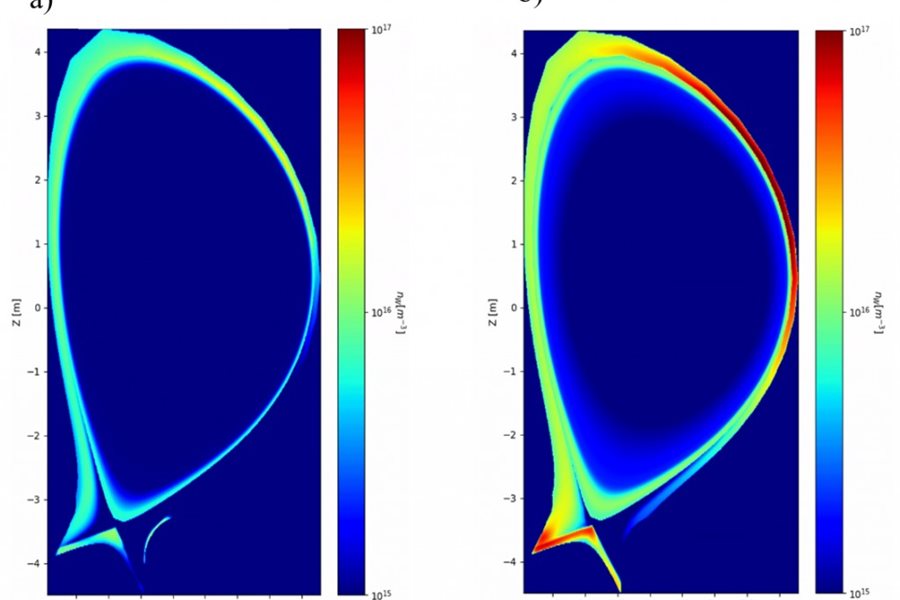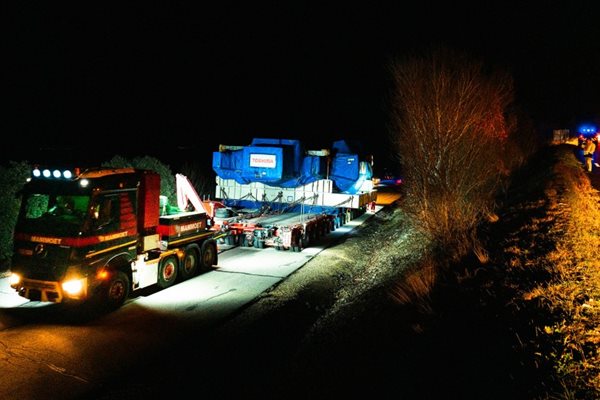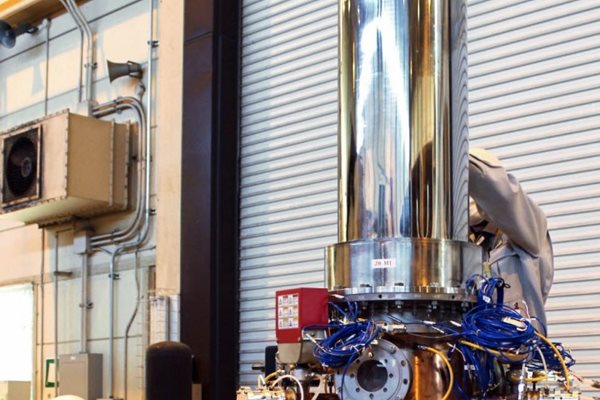
you're currently reading the news digest published from 09 Jan 2023 to 16 Jan 2023
featured3
of-interest1
press29
featured
Science | Favourable impurity dynamics in ITER confirmed by experiment
Recent studies at the JET tokamak confirm the physics basis for tungsten transport at the edge of fusion-producing plasmas in ITER and the project's strategy for tungsten impurity control. To achieve effective fusion power production in ITER's plasmas it is very important to keep the plasmas clean from impurities. 'Impurities' is the term used to name atoms from the wall of fusion devices that enter the plasma. Their presence dilutes the fusion fuels deuterium and tritium and also cools the plasma due to the emission of radiation (visible, ultraviolet and X-ray light). Both factors reduce fusion power production—and thus the proportion of impurities in the plasma needs to be kept at very low values. This is especially the case for tungsten (W) which is the material used for the areas of the wall receiving the largest power fluxes in ITER (the divertor). The amount of tungsten in an ITER high-fusion-gain plasma has to be kept under ~ 0.005 percent. Detailed studies to simulate how the tungsten atoms eroded from ITER's walls penetrate in the fusion plasma were carried out about one decade ago. These studies used the same models that can reproduce tungsten behaviour in currently operating tokamaks but, for the first time, applied to ITER in systematic way. The results obtained at that time were surprising: ITER edge plasma characteristics are very effective in screening the fusion plasma from the tungsten atoms coming from the wall (Figure a, above)—a behaviour never seen before. Because these predictions were done on a solid physics basis, this favourable tungsten behaviour was included in the planning of the ITER scientific program (see the ITER Research Plan here); the experimental demonstration of this behaviour, however, remained outstanding. Further analysis of the physics involved in the original studies showed that this ITER-specific behaviour also had one less-desirable consequence—edge instabilities called ELMs would actually bring impurities into the plasma (Figure b, above). This is unlike in currently operating tokamaks, where such instabilities are employed to expel impurities from the plasma. For ITER, this meant reformulating the ELM control strategy that had originally been considered. The new strategy relies on the suppression of these edge instabilities as soon as possible in the execution of the ITER Research Plan, and in particular before high power, requiring radiative divertor operation, is applied. This strategy would allow ITER to benefit from the enhanced screening of tungsten predicted by physics, while avoiding the drawbacks of ELMs in such plasma conditions. Despite the importance of this plasma physics behaviour for ITER scenario development and for the achievement of high-fusion performance with low tungsten concentration in the plasma, an experimental demonstration had never been achieved. That has now changed. As reported in a paper* published in December in Nuclear Fusion, JET scientists were recently able to reproduce this ITER-like tungsten behaviour. The demonstration relied on the achievement of peripheral plasma parameters in JET that are comparable to those in ITER, and on the development of complex analysis tools to determine tungsten behaviour from the acquired measurements in a quantitative way, as described in the publication. These experimental findings provide key confirmation of the physics basis for tungsten transport at the edge of fusion-producing plasmas in ITER and of the strategy for tungsten impurity control adopted in the ITER Research Plan. See a related article on the EUROfusion website. *A.R. Field et al 2023 Nucl. Fusion 63 016028
Image of the week | 15th D-shaped coil delivered
Fifteen out of ITER's 19 D-shaped toroidal field coils have been delivered. Toroidal field coils are among the largest and heaviest components of the ITER machine. Weighing approximately 330 tonnes each and measuring 9 x 17 metres, they stand in a circle around the steel vacuum vessel and generate a powerful magnetic field (11.8 Tesla) whose primary function is to confine the plasma. Of the 18 toroidal field coils required by the ITER machine (plus one spare), 10 are procured by Europe and 9 by Japan. The first European coil (TF9) was delivered to the ITER site on 17 April 2020, followed a week later by TF12 from Japan. Last week, in the wee hours of Friday 13 January, Japan delivered its seventh toroidal field coil (TF15, pictured here). After Europe delivers TF1 later this week, a total of 16 toroidal field coils will have been received on the ITER site—leaving only three more to be delivered.
Spinoffs | Japan develops first high-output, multi-frequency gyrotron
Building off expertise developed in the supply of high-power, high-frequency gyrotrons for the ITER Project and the JT-60SA tokamak, Japan's National Institutes for Quantum and Radioactive Science and Technology (QST) and Canon Electron Tubes & Devices Co., Ltd. (CETD) have invented a world-first—a gyrotron that generates megawatt-class output power and continuous operation at three frequencies. Gyrotrons are plasma-heating devices that generate high-intensity beams of electromagnetic radiation that correspond to the resonant frequency of electrons. Twenty-four devices are planned as part of ITER's electron cyclotron resonance heating system (ECRH), one of three external heating systems that will bring the ITER plasma to the temperatures required for fusion. The Japanese Domestic Agency, ITER Japan, is supplying 8 of the 24 devices. The ITER gyrotron design has been optimized for high output power (1 MW, or one million watts) and continuous operation at a single frequency (170 GHz). For a fusion reactor, a gyrotron that can generate microwaves at different frequencies would represent a real advantage. Electrons in the plasma rotate around magnetic field lines at a frequency proportional to the magnetic field strength of the reactor. Because the magnetic field is stronger near the centre axis of the reactor and weaker toward the outside, the resonance frequency of the electrons varies according to location. By creating a gyrotron that can generate megawatt-class output power and continuous operation at multiple frequencies, a wider area can be heated. The multi-frequency gyrotron developed by the teams at QST and CETD can operate selectively at 104 GHz, 137 GHz or 170 GHz. It also overcomes a 'scattering' problem during transmission (where microwaves outside of the optimized frequency tend to 'scatter' at the entrance of the waveguide) by improving on key components such the mode converter and the propagation mirrors. These improvements were shown to suppress microwave scattering at all three frequencies, resulting in high-output (1 MW), triple-frequency, continuous operation (300 s)—a world first. The achievement paves the way for the development of gyrotrons with three or even more frequencies, capable of plasma heating at various locations in the fusion reactor. Download the press release in Japanese or in English.
of-interest
Doctoral program APPLAuSE: apply by 3 February
The Instituto de Plasmas e Fusão Nuclear (IPFN) invites applications for its Doctoral Program in Plasma Science and Engineering, APPLAuSE, from eligible candidates by 3 February 2023 (for a September 2023 start, full time). Successful applicants, up to a maximum of three, will benefit from a four-year doctoral scholarship supported by the Portuguese Foundation for Science and Technology. The official language of APPLAuSE is English. For more information and to apply, see this IPFN webpage.



